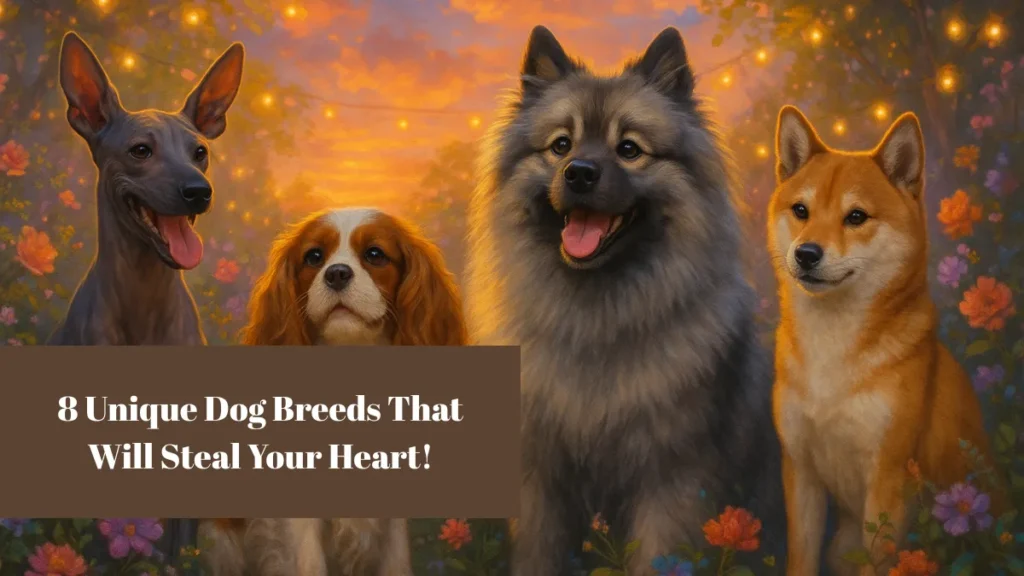Choosing the right dog breed is essential for a happy and safe home environment. While many dogs make loving companions, some breeds possess traits that make them unsuitable as household pets for the average owner. In this article, we explore 10 dog breeds that shouldn’t be pets due to their high-maintenance needs, unpredictable temperaments, or strong guarding instincts. These breeds often require experienced handlers, specialized environments, and a great deal of time, training, and resources.
Whether it’s their wild ancestry, excessive strength, or territorial behavior, these dogs can be challenging and even dangerous if not properly managed. Before bringing a dog into your life, it’s important to understand what breed fits your lifestyle—not just what looks appealing. Read on to discover which breeds, despite their beauty or popularity, are better left to professionals or those with significant experience in dog ownership.
1. Wolf Hybrid – The Wild Spirit
Wolf hybrids are a cross between a domestic dog and a wild wolf. While their appearance might be captivating, their behavior often leans more toward the wild side than that of a domesticated pet. These animals have unpredictable temperaments because of their inherited instincts from wolves, which can make them dangerous in domestic settings. Unlike typical dog breeds, wolf hybrids may not respond well to training, and they can show aggression, anxiety, or fear in new situations.
Additionally, their need for vast spaces to roam and high mental stimulation makes them a poor fit for city or suburban homes. Many states and countries have restrictions or outright bans on owning wolf hybrids because of the risks they pose to people and other animals. They are best suited for wildlife sanctuaries or highly experienced handlers who can accommodate their needs. In most homes, wolf hybrids simply don’t adapt well and often suffer due to confinement and misunderstanding.
2. Chow Chow – The Aloof Guardian
Chow Chows are known for their lion-like mane and dignified appearance, but beneath their regal look lies a dog that’s difficult to manage for many pet owners. This breed tends to be aloof and independent, making them less affectionate and social than other dogs. They are often reserved and may not tolerate strangers or other pets, which can lead to behavioral problems if not handled properly.
Training a Chow Chow requires patience and a firm but gentle hand, as they are not particularly eager to please. Furthermore, their thick coat demands regular grooming, and they are prone to various health issues, including hip dysplasia and eye problems. Because of their strong-willed nature and potential aggression, especially if not socialized early, Chow Chows are not suitable for novice dog owners or families with small children. Their temperament is better suited for experienced handlers who can dedicate time to training and maintaining a structured environment.
3. Dalmatian – The High-Energy Icon
Dalmatians gained fame thanks to movies and firehouse associations, but many are unaware of their challenging traits. These dogs are incredibly high-energy and need hours of daily exercise to prevent boredom and destructive behavior. When not given enough physical and mental stimulation, Dalmatians can become hyperactive and unmanageable. They are also known to have strong guarding instincts and may show aggression if not properly socialized from a young age.
Additionally, they have a genetic predisposition to deafness, which can make training even more challenging. Their intelligence means they learn quickly, but they also require firm boundaries and consistent leadership. Unfortunately, many families adopt Dalmatians for their looks without realizing the intense level of care and attention they need. This mismatch often leads to them being surrendered to shelters. Dalmatians are best suited for active individuals or families experienced with energetic breeds and committed to meeting their demanding lifestyle.
4. Akita – The Stubborn Protector
Akitas are powerful, noble dogs originally bred in Japan for hunting and guarding. While they are known for their loyalty and courage, they are also extremely stubborn and can be dominant toward other dogs. Akitas require strong, experienced leadership and early socialization to prevent aggressive or territorial behavior. They are not typically friendly with strangers and can be overly protective of their family, which poses risks in busy or unfamiliar environments.
Training an Akita can be a test of patience because they often resist commands unless they see a clear purpose. Additionally, their thick double coat requires regular grooming and sheds heavily. While they may be affectionate with family members, they are generally not playful or tolerant with young children or other pets. Due to their size, strength, and temperament, Akitas are not suitable for first-time dog owners and are better off with people who understand assertive breeds and can provide firm, consistent training.
5. Alaskan Malamute – The Working Dog
The Alaskan Malamute is a striking breed originally developed for pulling heavy sleds in Arctic conditions. While their strength and stamina are admirable, these traits make them unsuitable as typical household pets. Malamutes are incredibly active and need large spaces and constant physical activity to stay healthy and happy. Without proper exercise, they can become bored and destructive, often digging or howling excessively.
Their independent nature also means they may not respond well to commands or training, especially for novice owners. Malamutes have a high prey drive and are often not safe around smaller animals like cats or rabbits. Furthermore, their dense coats require extensive grooming, especially during seasonal shedding. They are also escape artists and can easily scale fences or dig under them if left alone. As beautiful as they are, Alaskan Malamutes thrive in environments that mimic their working origins, not in small homes or with owners who cannot meet their demanding needs.
6. Rottweiler – The Devoted Yet Strong Companion
Rottweilers are loyal and powerful dogs originally bred to herd livestock and pull carts. Despite their devotion to their family, they are not ideal pets for everyone. Their natural guarding instincts can make them overly protective and sometimes aggressive if not properly trained and socialized. Due to their strength and assertive personality, Rottweilers require confident owners who can establish themselves as pack leaders early on. Without this leadership, they may attempt to dominate the household.
Additionally, Rottweilers are often misunderstood and have been restricted or banned in some areas due to their potential for aggression. This reputation, whether deserved or not, can lead to difficulties with housing or insurance. They also need regular physical and mental exercise to prevent behavioral problems. If improperly managed, their sheer size and strength can pose serious risks. Rottweilers can be great dogs, but only in the hands of experienced, responsible owners willing to invest the time in training and socialization.
7. Caucasian Shepherd Dog – The Powerful Guardian
The Caucasian Shepherd Dog, also known as the Caucasian Ovcharka, is one of the most powerful guardian breeds in the world. Originally bred to protect livestock from wolves and bears, these dogs have a natural instinct to defend territory and family. Their size alone is intimidating—they can weigh over 150 pounds. Combined with their fearless nature, they can pose a significant threat if not properly trained.
These dogs are independent thinkers, which means they don’t always obey commands, especially if they don’t perceive the need to. Socialization is crucial but challenging, as they can be wary of strangers and aggressive toward unfamiliar animals. They also require an owner who can handle their stubbornness and physical strength. The Caucasian Shepherd is not a pet for apartment living or novice owners; they are best suited for rural settings with secure fencing and experienced handlers. Without proper care, they can be dangerously territorial and unpredictable.
8. Presa Canario – The Brave Protector
The Presa Canario, or Canary Mastiff, is a muscular, large-breed dog originally bred for working with livestock in the Canary Islands. Known for their loyalty and bravery, they are also highly territorial and dominant. These traits make them excellent guard dogs but problematic as household pets, especially in homes with children or multiple animals. Presas need an experienced owner who understands how to manage powerful, headstrong dogs and can provide firm, consistent training.
Without proper leadership, they may become aggressive or uncontrollable. Their size and strength mean that even small behavioral issues can quickly become dangerous. Additionally, Presas require regular physical and mental stimulation to avoid boredom-related behavior problems. In some areas, they are considered a high-risk breed and are subject to legal restrictions. The Presa Canario can be a devoted companion, but only in the right hands. For most families, the risks and responsibilities involved outweigh the rewards.
9. Fila Brasileiro – The Protective But Territorial Canine
The Fila Brasileiro, or Brazilian Mastiff, is a breed known for its intense loyalty and protective nature. While this makes them excellent guard dogs, it also makes them unsuitable for most households. One of their most defining traits is “ojeriza”, a Portuguese word meaning aversion or distrust, especially toward strangers. This trait is so deeply embedded in the breed that Filas are often aggressive toward unfamiliar people, making them a serious liability in social or urban environments.
They require an experienced handler capable of managing their dominant personality and territorial instincts. Training is difficult due to their independent nature, and socialization must start at a very young age. Moreover, their large size and strength mean they need a great deal of space and exercise. The Fila is banned in several countries because of incidents involving aggression. For those unfamiliar with protective working breeds, this dog can be too much to handle and potentially dangerous.
10. Saint Bernard – The Gentle Giant with Big Needs
Saint Bernards are often portrayed as gentle giants, and while they are generally affectionate and good with children, their sheer size and specific needs make them unsuitable for many households. Weighing up to 180 pounds, they require a lot of space to move around comfortably, which makes apartment living impractical. They also need regular grooming due to their thick coats and are notorious for drooling, shedding, and being messy eaters.
Furthermore, Saint Bernards are prone to numerous health problems, including hip dysplasia, heart conditions, and bloat, which can lead to high veterinary costs. Despite their calm temperament, they still need regular exercise to avoid obesity and joint issues. Their size can unintentionally cause harm to small children or elderly family members, even if they are not being aggressive. While loving and loyal, Saint Bernards are a huge commitment in terms of space, time, and care, making them challenging pets for the average family.
Bottom Line
While every dog deserves love and care, not every breed is a good fit for the average home. The 10 breeds listed above can pose serious challenges, from aggressive tendencies and high energy levels to strong guarding instincts and specialized needs. Choosing the wrong breed can lead to frustration, behavioral issues, or even dangerous situations. If you’re considering a dog, research thoroughly and choose one that aligns with your living conditions, experience, and time commitment. Sometimes, saying no to a particular breed is the most responsible and compassionate decision for both you and the dog.
FAQs
Why are some dog breeds not suitable as pets?
Certain breeds have traits like aggression, high prey drive, or intense exercise needs, which make them difficult to manage in typical households.
Are these breeds dangerous to own?
They can be, especially if not properly trained or socialized. Many of them are strong, territorial, or have unpredictable temperaments.
Can experienced dog owners keep these breeds safely?
Yes, with proper training, space, and understanding of the breed’s needs, experienced owners can manage these dogs responsibly.
Are any of these breeds illegal to own?
Some, like the Fila Brasileiro or Presa Canario, are restricted or banned in certain countries or states due to their aggressive history. Always check local laws.


